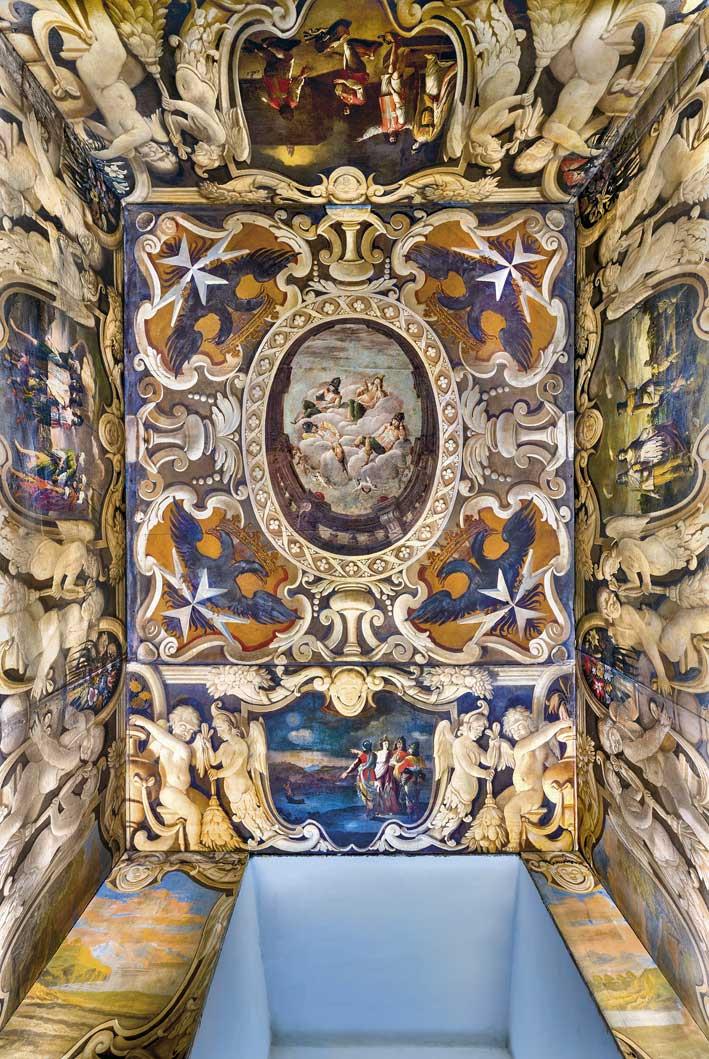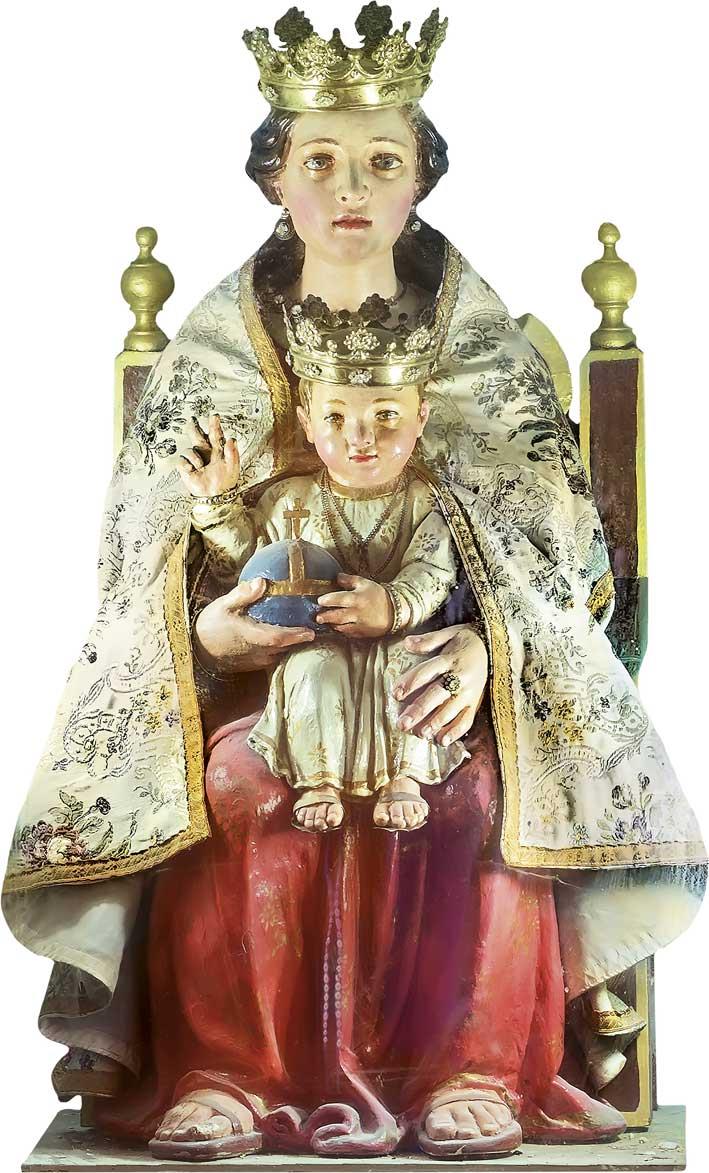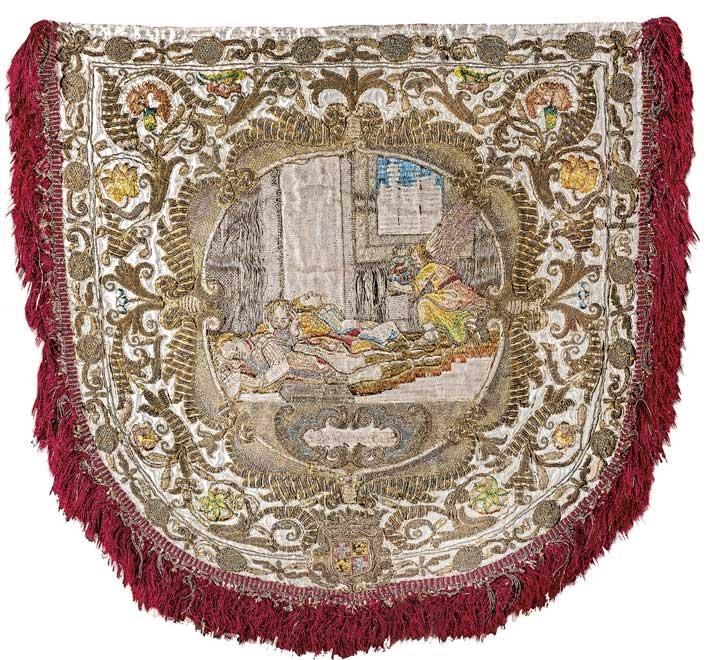Ta' Liesse: Malta's waterfront shrine for mariners
General editor: Giovanni Bonello
Publisher: Miller Distributors, 2020.
Pages: 255pp.
ISBN 978 9995 794248
Big, handsome, heavily illustrated books have become all the fashion in this country. Some eagerly buy them because they look good on a coffee table or in their good-looking bookcase, but it gratifies me to see that such books help the traditional printed publication continue to fight the good fight against the massive inroads of online publications.
Ta' Liesse, edited almost inevitably by Giovanni Bonello, is one such volume. It is a large volume, well-bound, finely printed and lavishly illustrated with chapters by 11 different authors. Many illustrations are by the indefatigable Daniel Cilia, whose tasteful design of the book incorporates a good many reproductions of relevant art works but also fine photographs taken by him, such as the poetical jacket picture and the incredibly sharp pictures of the Valletta Grand Harbour seafront. Perhaps the editor's desire to make the book, among other things, provide as comprehensive a guide as possible to the various artistic attempts to create as full and as vivid a pictorial account of the legend that gave rise to the Liesse cult in Picardie, France, and subsequently in our own Valletta, has led to the inclusion of too many images of the same legendary events as visualised artistically since the 17th century when authors like Giacomo Bosio, historian of the Order of St John, made the legend and the cult widely known.
The fairy-tale like legend tells how three French knights of St John, while fighting in the Holy Land, are captured and taken to Egypt where they resist attempts to make them apostasies. The Caliph then sends his daughter Ismeria to persuade them, but it is they who convince her of the truth of Christianity, and dazzle her with their words about the Mother of God to the point of her asking them to give her an image of the Virgin, even providing them with wood to create a sculpture. The job is done for them by an angel who flies down to them with a sculpture showing the Virgin holding her Son. Ismeria, quite enchanted, helps the knights escape, accompanying them and another supernatural intervention transports them while they slumber to Picardie in France, where Ismeria is baptised and the knights build a church to commemorate the miracle.

Paintings of the Legend of Liesse on the ceiling of corridor leading to Grand Master’s chambers Grand Master’s Palace, Valletta. Photo: Daniel Cilia
The name Liesse belongs to the place where a chapel was built, probably in the 12th century, and much later succeeded by the fine basilica that still stands there. It is still a place of pilgrimage, and in the past attracted a number of visits by French royalty right down to the 19th century. In Malta the cult was introduced by the knights of the French Langue, who built a small church close to the Valletta waterfront in 1620, replaced by a handsome baroque structure in 1740. Giovanni Bonello's research has revealed that it was the Maltese architect Andrea Belli who was mainly responsible for the second church. The belfry, which Bonello dislikes, was a later addition by someone else. This church was badly damaged during WWII and entirely restored since then. Though there have long been agreements with the Priory of Friars Minor in Valletta to carry out religious rites in the church, there is no great popular interest, not even among Valletta people, in the church and the cult attached to it. More importantly, for a few decades the church has been the Maltese seat of the Apostleship of the Sea, and rightly so, since from its very origins the Ta' Liesse church has been strongly associated with seafaring and voyagers.
Among the notable things in the church is the main altar painting, apparently by the 18th century artist Enrico Arnaud (or possibly Reynaud), a handsome work depicting the Virgin and Child surrounded by putti and, on a level below them, an Angel bearing the legendary statue transmitted to the three slumbering knights. The church also has a kitschy small statue showing the Virgin and Child, both crowned, by an unknown artist. Those who have admired and still admire in St John's, Valletta, the exquisite white marble monument to Louis Charles d' Orleans, Count of Beaujolais, who died in Malta in 1808, should know that the nobleman's heart was preserved, cased in a box and placed in a wall of Ta' Liesse church.

The small statue found in a side niche at Ta’ Liesse Church in Valletta, 70 cm high, by an unknown artist. Photo: Daniel Cilia
The earliest depiction of the Liesse legend illustrated here is a wood engraving by the French artist Nicolas Prévost published in the 1590s. The episodic structure of the engraving became the norm for most subsequent depictions, such as the one in the Grand Master's palace, Valletta, done in the 17th century, or the interesting embroidered depictions on a set of ecclesiastical copes presented by Grand Master Lascaris in the same century to St John's co-Cathedral.
Of the different sets of depictions of the legend listed, illustrated and commented upon by Theresa Vella, for me the most striking is a set of four large paintings, done apparently by different hands, from a private collection in Malta. Two of them have an impressive monumentality, and all of them capture the fairy tale flavour of the legend. Vella's favourite may be the set owned by the Friars Minor, a large set in 12 items, about which she writes at great and interesting length.
In the 17th century the marina, where the church was built, was an attractive one, as can be seen in the elegant drawings of the Dutch artist Willem Schellinks, who visited Malta in the1660s, showing the 1620 Ta' Liesse church, the no longer existent splendid Wignacourt fountain with its bronze Neptune statue, attributed to Leone Leoni, now in the Presidential Palace in Valletta and an aedicule housing a bronze bust of Christ the Redeemer by Alessandro Algardi, that ended up in later days on the facade of St John's in Valletta.

In 1640, Grand Master Jean-Paul de Lascaris-Castellar followed the example set by Wignacourt, and presented another group of vestments embellished with depictions of the Liesse miracle as his gioia.12 The set consists of seven copes made from red silk, with the Lascaris double-headed eagle woven in gold thread. Six of the seven copes have lavishly embroidered orphreys, each showing an episode of the Liesse legend. The miracle of the presentation of the statue brought by an angel to the imprisoned knights. Photo: Daniel Cilia
One of the longest and perhaps most interesting chapters in this book, by Christian Mifsud and Mevrick Spiteri, gives a well-researched picture of Ta' Liesse marina since the late 16th century. This was where visitors disembarked and climbed the hill to enter Valletta through the Del Monte Gate (replaced in Victorian times by the Victoria Gate), and where, with the building of wharfs and warehouses, maritime commerce became easier. The Ta' Liesse church attracted the religious-minded to enter and worship in it.
Other contributors to the volume, whom I have not mentioned, are the distinguished German scholar Thomas Freller, who surveys the many authors who have written about our church, quoting from their accounts and sometimes commenting on them: he also states that the boatmen in the vicinity had a special devotion for Ta' Liesse cult; and Carmen Depasquale, who looks at the original cult of Our Lady of Liesse in Picardie. Roger de Gaetano gives a thoughtful and perceptive account of how the Liesse legend has been depicted in drawings by artists like Mattia Preti and Stefano Erardi, giving some striking Preti illustrations of drawings now in a private collection; Amy Sciberras writes about the titular painting of the church and of the painstaking work needed by her to restore it; Eric Fenech Sevasta writes on a painting in the church attributed to the "enigmatic" painter Cassarino; Kenneth Cauchi writes about the church's five bells while Nicholas Joseph Doublet writes about the Liesse cult in Malta.
All those readers who wish, not just to read this fine book and enjoy its pictures, but would also like to own a copy should know that Miller Distributors, the book's publisher, will give the full amount received for every book sold to Ta' Liesse church preservation fund.